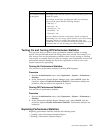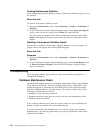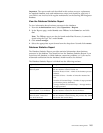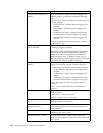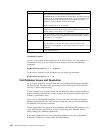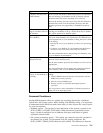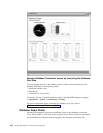
Approach Details
Complete Associate Docs
to BP activities
If an associate document to BP business process is scheduled
but not running, your database can fill up because expired
document data will not be associated to be removed.
Review the business processes and verify that the schedule is
defined and turned on in the business processes, and that
business processes are purged after a reasonable amount of
time.
Reduce the amount of
large or old data stored in
the database
If old data and large files are using database resources and
causing your database to fill up, archive those files to another
file system instead of to database tables.
Optimizing the Size of
Your Database
As your business and processing needs change, you may find
that your initial database size requirements are different from
your requirements. If your database is filling and your volume
is increasing:
v Increase the size of your database to reflect your processing
needs.
v Compress your database, if your database has this feature,
in order to save more data to the same size database.
For more information about compressing your database, refer
to your database documentation.
Optimizing the Data
Retention Period
You may be retaining information in the database for longer
periods of time than necessary.
Set the data retention period in the database to lower levels as
appropriate.
For more information about setting data retention periods in
your database, refer to your database documentation.
BPRecovery Business
Process is Not Running or
is Failing
If your BPRecovery business process is either not running or is
failing:
1. Contact IBM Professional Services for assistance with the
BPRecovery business process
2. Run the corrected BPRecovery.
3. Restart, resume, or terminate interrupted business
processes.
You can perform a mass termination of business processes if
many are in an interrupted state.
Document Persistence
Sterling B2B Integrator offers two options for persisting documents: a database
option and a file system option. When dealing with database sizing, it is important
to understand these differences and ensure that you have chosen the correct option
for your environment.
v Database option – The payload of each document in the system is stored in the
DATA_TABLE or TRANS_DATA tables. When documents (payloads) become
large, it leads to inefficient use of database disk space and results in greatly
increased network traffic.
v File system persistence option – This option was created to store the payload of
documents out on disk. For documents with file system persistence, the
DATA_TABLE/TRANS_DATA tables are still utilized. The difference is that the
Performance Management 221



